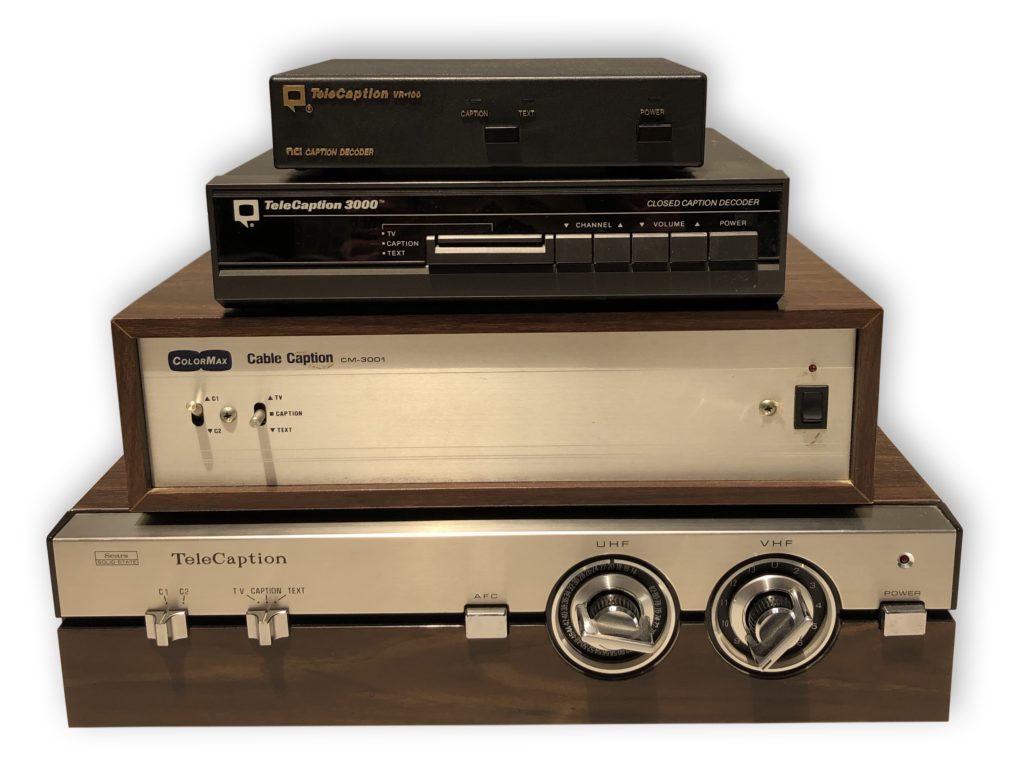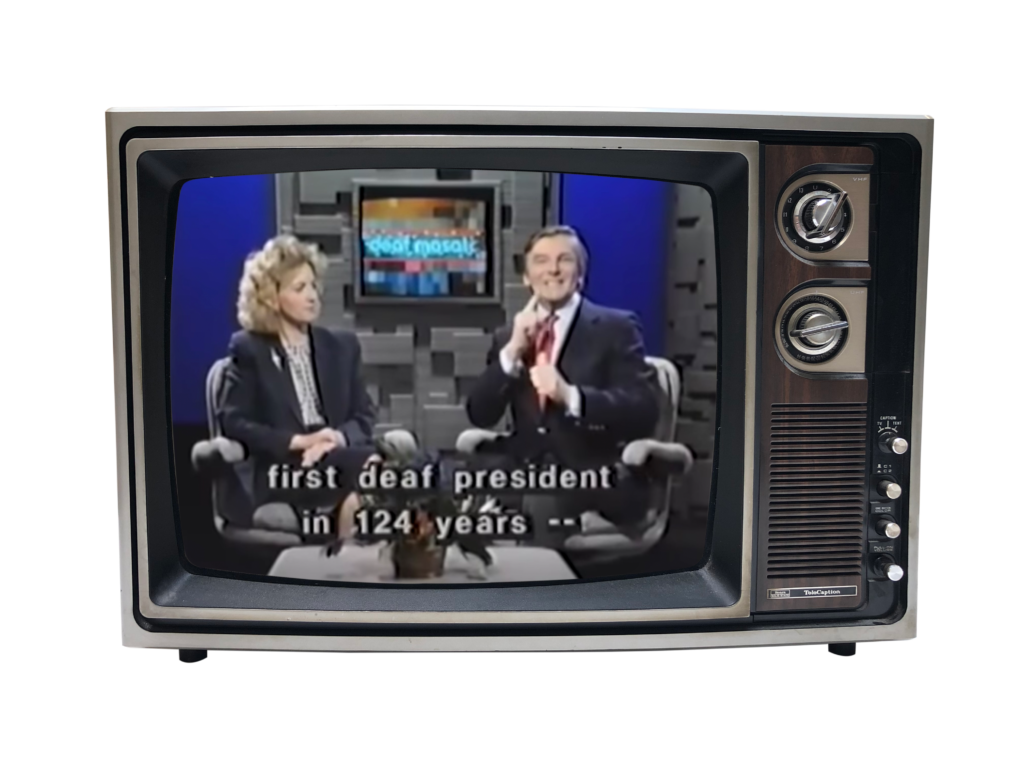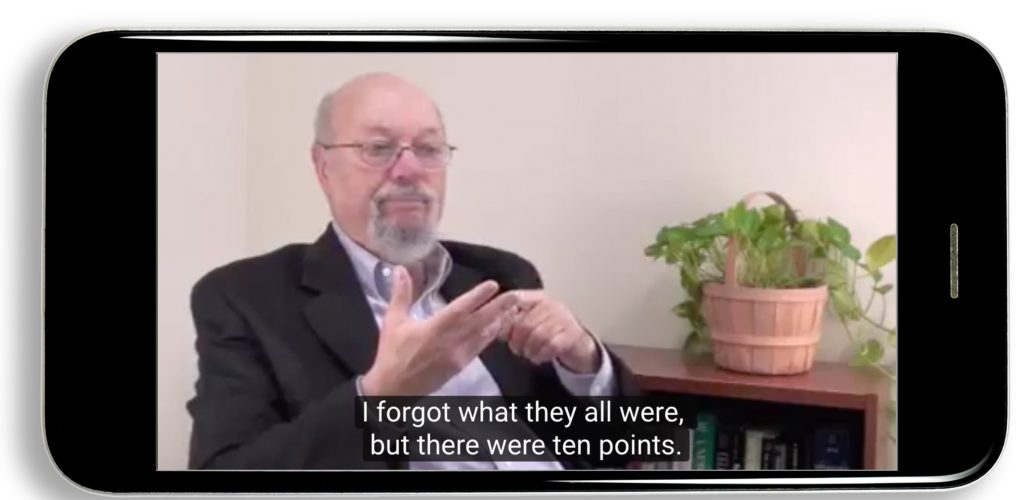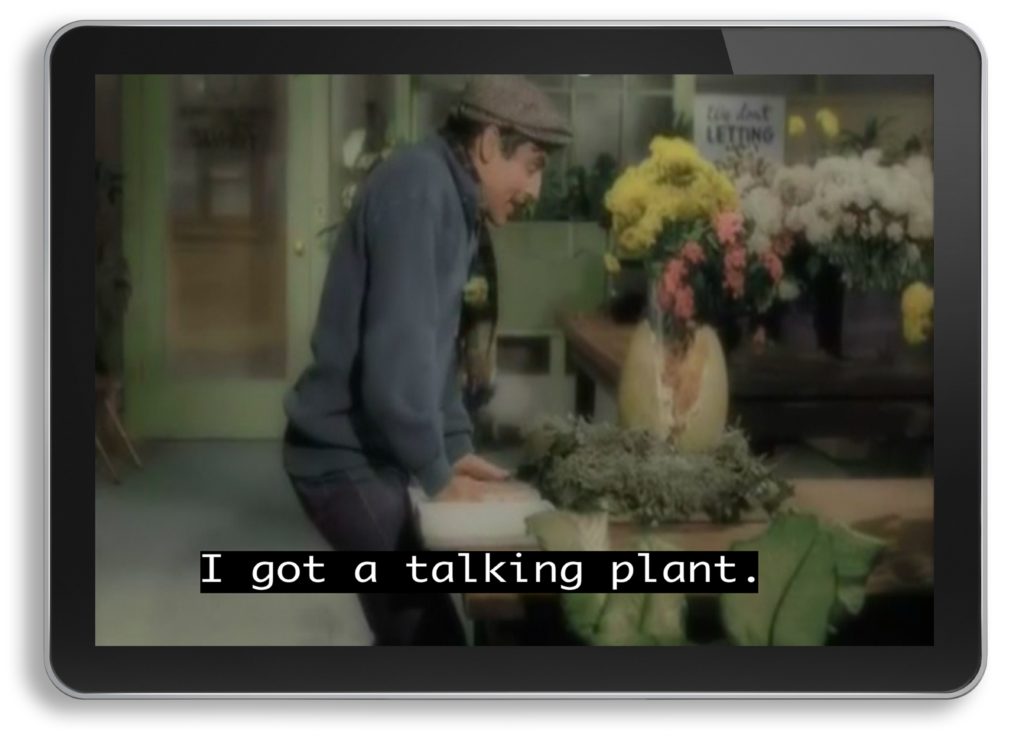In the 1970s, the U.S. government began to experiment with ways of captioning television. The National Bureau of Standards demonstrated closed captioning at Gallaudet University in 1972. WGBH in Boston captioned “The French Chef,” which was Julia Child’s first TV series. WGBH later open-captioned “Zoom,” an educational series for children. WGBH is a local affiliate of the Public Broadcasting System (PBS).
PBS began an unusual and creative partnership with ABC News. Every night ABC broadcast its national news at 7 p.m. Then PBS recorded the ABC news and PBS staff captioned it very quickly. At 11 p.m. the same night, PBS actually re-broadcast ABC’s news show (the 7 p.m. version) with captions. Deaf people around the country turned on their PBS station at 11 p.m. and watch the 7 p.m. ABC news, but now open captioned. This way of providing accessible news continued for several years.
The deaf community would have been happy to expand this type of captioning. However, PBS unfortunately received complaints from hearing viewers about open captioning. The Department of Education paid for some research to learn more about hearing people’s reactions to open captions: The research found that, although many hearing people did not mind seeing captions, about 10% were very much against them. At that time, people thought that ten percent of all hearing people is larger than the number of the audience that is deaf. (This is actually not true: about 1 in 6 people are deaf or hard of hearing; more than ten percent.) Broadcasters would not be willing to lose or anger this much of their audience. It was a financial issue for the networks.
Note that today there are many hearing people who watch captioned videos.
Dr. Norwood and his colleagues in the Department of Health, Education, and Welfare did not give up. The Department of Education decided that a closed captioning system would need to be developed. This required a great deal of work and leadership from the U.S. government and cooperation from the broadcast industry. It is remarkable that, in just a few years, between 1975 and 1980, the closed captioning system was developed.
Closed Caption Decoders from the 1970s and 1980s

Companies started developing special decoder boxes for showing closed captions on TV. This picture shows four of them, by TeleCaption and ColorMax. Consumers had to buy them and hook them up between the TV and the antenna. They were big and bulky, but got smaller over time. However, it was still separate equipment that cost deaf and hard of hearing viewers money, compared to hearing viewers.
First TV with Built-In Caption Decoder

This TV was sold by Sears. It had the first built-in closed caption decoder. People who bought this TV no longer needed to buy the separate caption boxes shown above. In 1990, the Closed Caption Decoder Circuitry Act was passed, and since 1993 all TVs larger than 13 inches have had built-in decoders. In 2010, this requirement was extended to all TVs and other consumer electronics, irrespective of screen size.
New High-Definition and 4K TVs

Compared with old TVs, these new TVs have high-quality screens with many more options for showing captions. You can change fonts, colors, and backgrounds. Some companies even have experimented with moving captions around, as shown in this picture.
Smartphones

People now watch a lot of video on the go on their phones. Even hearing people use captions a lot while they are out in public. Deaf, hard of hearing, and hearing people are able to watch videos with captions anywhere and anytime.
Tablets

Tablets has been available on the market since 2010s. They are popular for watching videos at home, when people are in bed, or when a family wants to watch different things at the same time. The screens are big enough to read captions comfortably.